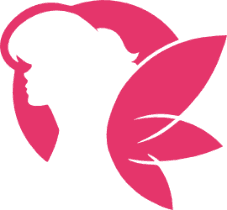MODx 가속화: 입증된 기술
- JavaScript
병합, 압축, 지연 로딩 - CSS
크기 압축 및 로드 최적화 - 이미지
CDN OptiPic을 사용한 압축 및 변환 - 타사 위젯
온라인 컨설턴트, 채팅, 소셜 네트워크 등 - 애널리틱스 시스템
Google Analytics, Facebook 등
어떤 문제와 Google Pagespeed Insights 권장 사항이 개선될 것인지
Minimize main-thread work
Consider reducing the time spent parsing, compiling and executing JS. You may find delivering smaller JS payloads helps with this.
Eliminate render-blocking resources
Resources are blocking the first paint of your page. Consider delivering critical JS/CSS inline and deferring all non-critical JS/styles.
Reduce unused JavaScript
Reduce unused JavaScript and defer loading scripts until they are required to decrease bytes consumed by network activity.
Reduce unused CSS
Reduce unused rules from stylesheets and defer CSS not used for above-the-fold content to decrease bytes consumed by network activity.
Ensure text remains visible during webfont load
Leverage the font-display CSS feature to ensure text is user-visible while webfonts are loading.
Reduce the impact of third-party code
Third-party code can significantly impact load performance. Limit the number of redundant third-party providers and try to load third-party code after your page has primarily finished loading.
Serve static assets with an efficient cache policy
A long cache lifetime can speed up repeat visits to your page.
Reduce JavaScript execution time
Consider reducing the time spent parsing, compiling, and executing JS. You may find delivering smaller JS payloads helps with this.
Efficiently encode images
Optimized images load faster and consume less cellular data.
Serve images in next-gen formats
Image formats like WebP and AVIF often provide better compression than PNG or JPEG, which means faster downloads and less data consumption.
MODx의 속도를 확인하십시오 - 귀하의 웹사이트를 지정하십시오
시작하는 방법 Pagespeed OptiPic 에 대한 서비스 MODx
가격 책정: 배포 + 구독
배포에 대한 일회성 지불. 구독에 대한 월별 지불.
Включая ускорение бекенда, TTFB, время ответа сервере, время до первого байта
프런트 엔드 측에서 MODx의 속도를 높이는 방법(클라이언트 가속)
프런트 엔드 측에서 가속도 이미지 MODx를 압축하는 것 외에도 다른 구성 요소의 최적화를 통해 얻을 수도 있습니다.
- 서버 측의 정적 파일 캐싱(이미지, CSS, js).
- css 결합.
- css 압축.
- js에 가입합니다.
- 압축 js.
- css 및 js를 html 코드 페이지 하단으로 전송합니다.
- 불필요한 스크립트 및 위젯 비활성화.
백엔드에서 다운로드 MODx 가속화(서버 가속화)
서버 측 가속은 서버에 의한 페이지 생성 시간을 최소화하는 목표입니다. 이것은 일반적으로 다음과 같은 방법으로 촉진됩니다.
- 호스팅 또는 서버를 보다 강력한 것으로 변경
- 웹 서버 설정 최적화(apache, nginx, php-fpm).
- mysql(또는 사이트에서 사용하는 다른 하위 사이트)에 대한 설정을 최적화합니다.
- 데이터베이스 쿼리 캐싱.
- 타사 API에 대한 쿼리 캐싱.
- 가능한 모든 캐싱(복합 사이트 기술 등)
- PHP 코드 로직의 리팩토링 및 최적화.
OptiPic 전문가는 가속의 모든 미묘함을 알고 있으며 사이트의 복잡한 가속을 해결할 준비가 되어 있습니다. 사이트의 최대 가속이 필요한 경우 당사에 문의하십시오.

 OpenCart
OpenCart  Simpla
Simpla  Symfony
Symfony  PHPixie
PHPixie  Yii
Yii  PrestaShop
PrestaShop